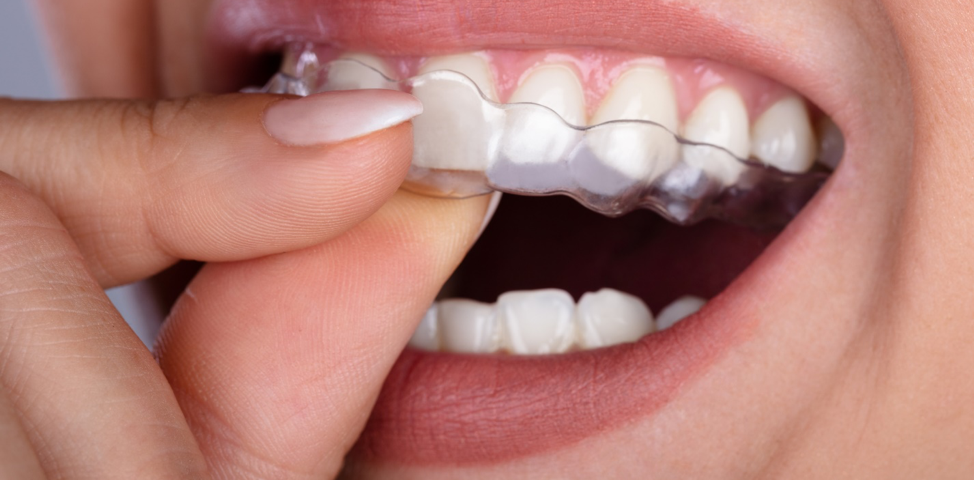
“Are dental implants worth it?” and Other Frequently Asked Questions
August 7, 2020
The 4 Stages of Gum Disease Explained
August 21, 2020Metal braces have been used for hundreds of years and have continually evolved into the combination of wires and brackets we’re so familiar with today. Although these are extremely effective for straightening teeth and correcting several orthodontic issues, many patients desire a more discreet solution. That’s where Invisalign clear aligners come in.
And, yes, they are as great as they sound! Invisalign provides a way to correct misalignment, spacing, and crowding issues, along with a few others in a subtle way.
Continue reading to learn exactly how Invisalign corrects these orthodontic issues.
Crowded Teeth
Dental crowding occurs when there isn’t enough room in the jaw for teeth to fit properly. This causes teeth to overlap, twist, and bunch up. Invisalign can correct even severe cases of crowded teeth because the aligners easily fit over each tooth, allowing the tooth rotation to begin much sooner than with traditional braces.
Gapped Teeth
Spacing issues aren’t just a cosmetic problem. Food is more likely to lodge between those teeth, causing gum disease, gum tenderness, and soreness. Invisalign clear aligners are perfect for patients with gapped teeth. Each new aligner is designed to bring the teeth closer and closer to their proper positions until the goal is met.
Overbite
Everyone has a small overbite so that their teeth close properly, but too much of an overbite can lead to jaw pain and worn-down teeth. With traditional metal braces, dentists tighten the wires every couple of weeks. This process typically causes serious discomfort.
Invisalign clear aligners are much more comfortable. Every two weeks, patients receive a new aligner that moves their teeth just a little more. While there may be slight pain or discomfort, it’s not typically as long-lasting or as severe as traditional braces.
Underbite
An underbite is the exact opposite of an overbite—the top row of teeth sits behind the bottom row when the person bites down. This can make eating, sleeping, speaking, and even breathing more difficult.
Clear aligners slowly shift the jaw and teeth to correct the underbite. Your dentist may also recommend rubber bands to enforce the jaw movement.
Open Bite
An open bite is when the upper and lower teeth don’t touch when the mouth is closed. Patients with open bites often complain about the appearance and function of their smile.
Invisalign can fix mild to moderate cases of open bite by the same methods used for an underbite and overbite. However, more severe cases are better served by traditional orthodontics.
Crossbite
If some of your top teeth go behind your bottom teeth and others are in front, you have crossbite. As with an open bite, dentists can correct mild to moderate cases of crossbite. Along with not being aesthetically pleasing, this orthodontic issue can also cause damage to the gum line, make the gums recede, and lead to bone loss.
Discover If Invisalign Is Right for You
Dr. Abbey J. Lee at Smiles for Grant Park is determined to help all patients achieve a healthy, beautiful smile. The first step towards this goal is to schedule an initial consultation with our friendly team.
During this appointment, Dr. Lee will examine your mouth and jaw for any oral health issues that should be resolved before beginning Invisalign treatment. Then, she will determine if you have the right qualities for Invisalign trays. The good news is that most people do!
To experience the excellent care that we provide at Smiles for Grant Park, call our office at (404) 328-7177 to schedule your initial consultation.


